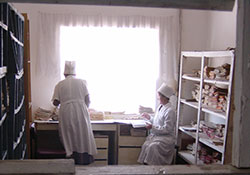Data and statistics

WHO/Jukka Pukkila
Shortage of nurses and midwives
- There are an estimated 7.3 million nurses and midwives in the WHO European Region. This number is not adequate to meet current and projected future needs.
- Statistics show that demographic change in most countries in the Region is leading to an increasing number of older people, often needing long-term care, and a decreasing number of young people who may choose a nursing and/or midwifery career. Nursing and midwifery education is in strong competition with other disciplines that often offer better career prospects.
- Migration (mainly from eastern to western European countries), retirement and a trend among nurses and midwives to leave the professions (in search of better incomes and career opportunities) also contribute to the shortage.
Education
- In most countries in the WHO European Region, 12 years of education is required before entry into an educational programme in nursing and midwifery.
- Many countries recognize the need for academically prepared nurses and midwives, and the proportion of university-educated nurses and midwives, in comparison to those who received vocational training, is slowly increasing.
- Nevertheless, the number of nurses whose education has prepared them to take over advanced practice roles is currently not sufficient. This deficiency is expected to continue through the next decade.
- Although progress is being made in standardizing professional education in the European Union, in 2009 attaining a bachelor's degree requires three years of study for nurses in Italy and six years for nurses in Germany (three years of vocational training followed by three years of study).
Participation in decision-making
- The higher the proportion of academically prepared nurses in a country, the more likely nurses are to be involved in decision-making.
- The chief nursing officer or government chief nurse in the health ministry is considered to have the most influential role for nurses in decision-making in most countries. Nevertheless, some countries have established departments or divisions in ministries of health that are responsible for nursing care.
- Some national nursing and national midwifery associations use the media to influence policy and to communicate their messages to a wider audience. The Royal College of Nursing (Wales), for example, has a regular feature in the most widely read regional newspaper, where it raises and discusses nursing issues.
Remuneration
- Nurses' and midwives' salaries are still below the national average in many countries in the European Region.
- In almost all countries in the Region, over 90% of nurses and midwives are female. As salaries for women in general continue to be lower than those for men, nurses receive lower payment than employees in comparable public services that are more male dominated.



